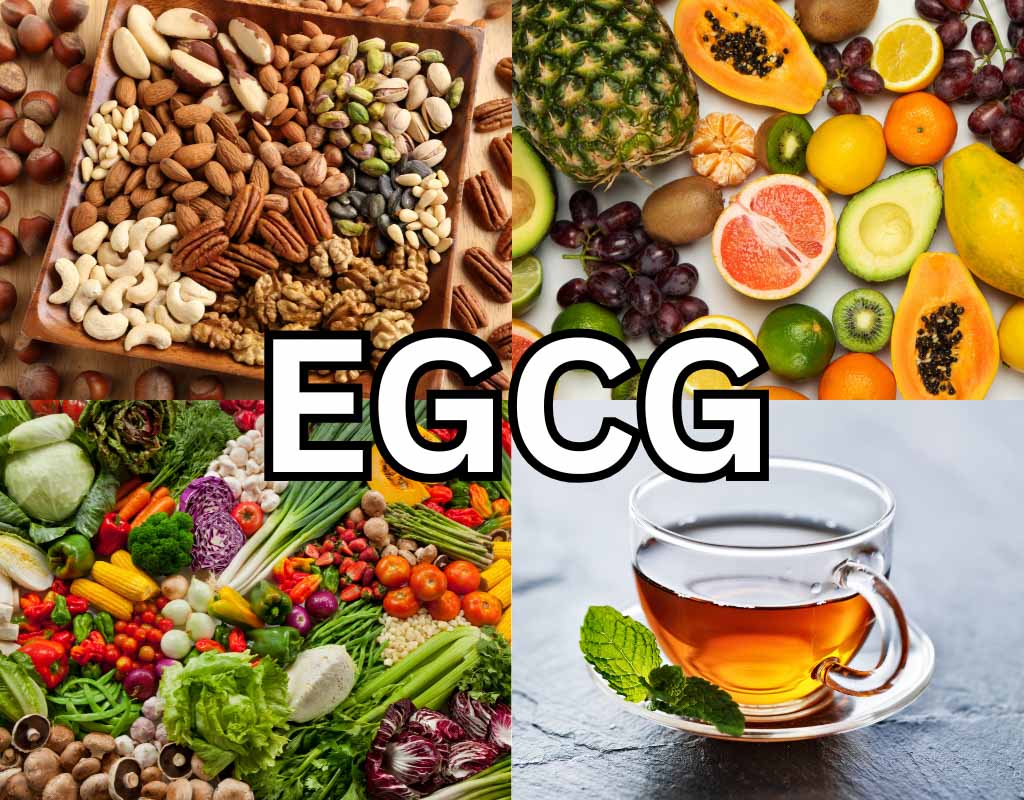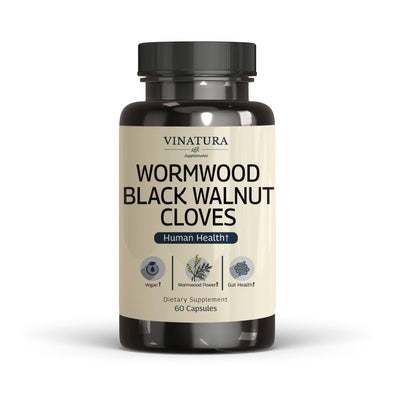
Foods High in EGCG: Natural Sources of Green Tea Antioxidant
Epigallocatechin gallate (EGCG) is a prominent catechin in the polyphenol group, known for its antioxidant power, which surpasses that of vitamin E by several times.
EGCG helps protect cells from damage, supports heart health, controls inflammation, and boosts metabolism—key factors for maintaining overall wellness.
Due to its wide-ranging benefits, more people are seeking foods rich in EGCG to naturally incorporate into their daily diets. Below are the top foods containing EGCG and tips for optimizing its absorption.
Before exploring further, please read the disclaimer located at the end of this webpage.
Key Takeaways
- EGCG is the main catechin in green tea, comprising 50–70% of its polyphenol content.
- Its multiple hydroxyl groups give EGCG strong antioxidant potential, often exceeding vitamin E.
- Studies suggest EGCG may support heart health, metabolic balance, and overall wellness.
- EGCG is less stable in neutral or alkaline environments and absorbs better under slightly acidic conditions.
What is EGCG? Health Benefits and Function

EGCG, short for Epigallocatechin Gallate, is a natural compound found in abundance in green tea leaves. It belongs to the catechin group, a type of polyphenol known for its strong antioxidant properties.
EGCG is the most common catechin in green tea, making up about 50–70% of its total catechin content and driving many of green tea’s health benefits [4, 6].
Chemically, EGCG has the molecular formula C₂₂H₁₈O₁₁, with a structure consisting of four rings (A, B, C, and D) and eight hydroxyl groups. These hydroxyl groups are what give EGCG its exceptional antioxidant abilities, outperforming vitamin E [6].
EGCG is formed through the combination of epigallocatechin (EGC) and gallic acid (GA) via an esterification reaction (Liu et al., 2024). However, this compound is less stable in neutral or alkaline environments and remains more stable in slightly acidic conditions [6].
What makes EGCG stand out is not just its chemical structure but also its potential health benefits. Numerous studies have highlighted EGCG’s wide range of health advantages, including:
- Antioxidant properties: EGCG helps neutralize harmful free radicals, which may support cellular protection and slow down the aging process. Its antioxidant activity is considered stronger than that of vitamin E [6].
- Cancer-related research: Studies suggest that EGCG may play a role in influencing cancer cell growth, blood vessel formation in tumors, and programmed cell death (Liu et al., 2024). Early findings also point to possible roles in liver, stomach, lung, and breast health, though further research is needed [4].
- Heart health: EGCG has been studied for its potential to support blood vessel function, reduce inflammation, and help maintain healthy cholesterol balance [6].
- Blood sugar balance: Evidence indicates that EGCG may help support healthy blood sugar regulation, which could be beneficial for individuals concerned about glucose metabolism [6].
- Weight management: EGCG may influence fat metabolism and energy use, potentially supporting weight management efforts as part of a balanced lifestyle [6].
- Blood pressure support: Some research points to EGCG’s potential role in supporting healthy blood pressure levels, particularly in individuals at higher risk [6].
- Antibacterial and antifungal activity: EGCG has been studied for its ability to help limit the growth of certain bacteria and fungi, while supporting a healthy gut balance [6].
Thanks to its combination of chemical properties and diverse biological effects, EGCG is considered a standout component in health-promoting foods. In the next section, we’ll explore foods rich in EGCG—not just green tea but also fruits, nuts, and vegetables commonly found in daily diets.
Foods High in EGCG You Should Know
To better understand which everyday foods naturally provide epigallocatechin gallate (EGCG), the table below summarizes the EGCG content found in common teas, nuts, fruits, and vegetables. The values are expressed per 100 g and are based on recent findings from Liu et al. (2024).
|
Food Sources |
Types |
EGCG Content (mg/100 g) |
|
Tea |
Green |
7380 (dry leaves) |
|
64.15 (brew) |
||
|
White |
4245 (dry leaves) |
|
|
46.00 (brew) |
||
|
Oolong |
34.48 (brew) |
|
|
Black |
9.36 (brew) |
|
|
Nuts |
Hazelnuts |
1.06 |
|
Pistachio nuts |
0.40 |
|
|
Pecans |
2.30 |
|
|
Carob flour |
109.46 |
|
|
Fruit |
Apples |
1.93 |
|
Blackberries |
0.68 |
|
|
Cranberries |
0.97 |
|
|
Kiwifruit |
0.09 |
|
|
Peaches |
0.30 |
|
|
Pears |
0.17 |
|
|
Plums |
0.40 |
|
|
Strawberries |
0.11 |
|
|
Vegetables |
Onions |
0.08 |
Nuts

Nuts like hazelnuts, pistachios, and especially pecans are not only nutrient-rich but also contain epigallocatechin gallate (EGCG), a plant compound with high biological activity [6]. EGCG provides antioxidant benefits and supports overall health, making these nuts a valuable addition to a daily diet.
Among them, pecans have the highest EGCG content, reaching 2.30 mg per 100g (Liu et al., 2024). In addition to EGCG, pecans and other nuts are rich in unsaturated fats, vitamin E, fiber, and other antioxidants, which support heart health, improve cholesterol levels, and reduce inflammation.
Interestingly, the molecular structure of EGCG in nuts contains many phenolic hydroxyl groups, which enable it to effectively neutralize free radicals and protect cells from damage [6].
However, not everyone should consume nuts freely. People with allergies to tree nuts like pecans, walnuts, or almonds need to be cautious. Additionally, since nuts are calorie-dense, those managing their weight or with metabolic conditions should control portion sizes.
Fruit

Some familiar fruits like apples, pears, peaches, plums, kiwi, strawberries, cranberries, and raspberries contain small amounts of epigallocatechin gallate (EGCG), a plant compound with numerous health benefits (Liu et al., 2024).
Although the EGCG content in fruits is lower than in some other foods, including them in your daily diet may still contribute to overall health and wellness.
Epidemiological studies have shown that diets rich in flavonoids—a group of plant compounds that includes EGCG—are linked to a reduced risk of heart disease [9]. This partly explains why eating a variety of fruits, especially berries, is recommended for a healthy diet.
While EGCG has advantages like low toxicity and water solubility, its absorption in the body is limited and can be affected by diet or medications [6]. To maximize its benefits, combining flavonoid-rich fruits with a healthy lifestyle is recommended for long-term health.
Vegetables

While green vegetables are well-known as an essential part of a healthy diet, when it comes to epigallocatechin gallate (EGCG)—a highly bioactive plant compound—only onions have been noted to contain it, with a very small amount of about 0.08 mg per 100g of dried leaves [6].
Although EGCG is not common in vegetables as it is in some fruits or nuts, green vegetables still play a vital role in providing fiber, vitamins, minerals, and other antioxidants.
Dark-colored vegetables like spinach, broccoli, and kale are often rich in phytonutrients—plant compounds that benefit health, even if they don’t directly contain EGCG.
Tea

Tea is one of the most popular beverages worldwide, valued not only for its taste but also for its scientifically recognized health benefits. A key bioactive compound in tea, especially green tea, is epigallocatechin gallate (EGCG), a type of catechin ester with significant biological activity.
EGCG is the most abundant catechin, making up about 50% to 70% of total catechins and serving as the primary polyphenol in green tea. According to the USDA, green tea can contain up to 7380 mg of EGCG per 100g of dried leaves, far higher than any other analyzed natural food (Liu et al., 2024).
Based on an online discussion, many users shared perspectives on the benefits and risks of drinking tea, including EGCG-containing types like green tea.*
Some noted that green tea has anti-inflammatory effects, with recommendations to drink 4–6 cups daily for benefits, with no clear harm when consumed moderately. However, concerns include high oxalate levels in black tea, which may contribute to kidney stones if consumed excessively, and fluoride in tea leaves. *
Tea bags have also been flagged for potentially releasing microplastics, while strong teas like black tea may cause nausea due to tannins.*
Some users praised the focus-enhancing effects of Yerba mate tea but noted that overuse could affect blood pressure. To minimize risks, choosing organic loose-leaf tea and drinking in moderation can help avoid issues from oxalates or fluoride.*
Tips to Maximize EGCG Absorption from Food
Studies have identified several simple yet effective strategies to optimize EGCG absorption from food and drinks, which can be easily applied in daily life.
One key factor is the timing and method of consumption:
- Drinking on an empty stomach: Consuming EGCG or green tea on an empty stomach, especially after an overnight fast, can increase the concentration of free EGCG in the blood by 2.7 to 3.9 times compared to drinking with a light breakfast [7].
- Avoiding high-fat or high-carb meals: Carbohydrates and fats can reduce EGCG absorption by increasing gut pH and slowing stomach emptying (Chow et al., 2005).
In addition to timing, the brewing temperature and pH environment also significantly affect EGCG’s stability. EGCG breaks down easily at high temperatures and in neutral or alkaline pH environments but remains more stable in acidic conditions (pH below 4) [8].
Therefore, brewing tea at temperatures between 60–80°C and avoiding prolonged boiling of tea leaves can help preserve the catechin content, particularly EGCG, in your cup.
A study on industrial applications also found that spray-drying green tea at around 136°C is most effective for retaining polyphenols and EGCG [10].
Combining EGCG with certain ingredients can also enhance its bioavailability:
- Vitamin C (Ascorbic Acid): Helps prevent oxidation and degradation of EGCG, improving its stability and absorption [7].
- Xylitol & Sucrose: When combined with vitamin C, these sugars can enhance catechin transport through the intestines and improve stability during digestion [10].
- Piperine (from black pepper): Increases EGCG levels in the bloodstream by inhibiting its metabolism in the gut [8].
Should You Consider EGCG Supplements?

For those who don’t enjoy drinking tea, can’t maintain a plant-rich diet, or have a busy lifestyle, EGCG supplements—such as EGCG capsules or green tea extract—can be a convenient alternative.
These supplements allow for clearer dosage control compared to natural food sources and are easy to incorporate into daily routines.
However, it’s important to understand safe dosage levels:
- Doses below 600 mg of EGCG per day are generally well-tolerated and do not cause liver harm in clinical studies [5].
- Higher doses (800–850 mg per day) may support weight loss but should be used short-term and monitored closely [11].
- The risk of liver damage may arise with doses above 700 mg per day, especially with prolonged use (Cerbin-Koczorowska et al., 2021).
Some organizations, like Health Canada, recommend not exceeding 300 mg of EGCG per day from supplements, as this level is considered highly safe.
Whether using capsules or natural food sources, EGCG consumption should be carefully considered if you have liver issues or are taking medications metabolized by the liver.
Frequently Asked Questions
1. Which Tea Has the Most EGCG?
Green tea has the highest epigallocatechin-3-gallate (EGCG) content compared to other teas. This is because green tea is "non-fermented," and its production process preserves significantly more catechins than fermented teas like black tea or oolong [1].
2. Can I Drink Green Tea Every Day?
Yes, you can drink green tea daily, as it has been widely consumed since ancient times and is considered a health-promoting beverage.
Studies suggest that regular green tea consumption may support cardiovascular and overall wellness, while also contributing to oral health and other physiological functions [1].
3. Is EGCG Safe for Long-Term Use?
The safety of EGCG for long-term use depends on its form and dosage. Traditionally brewed green tea is considered safe and does not cause significant side effects, even at higher doses [5].
However, concentrated green tea extracts or EGCG supplements at high doses have been linked to cases of liver damage (hepatotoxicity) [5].
Conclusion
EGCG is a bioactive compound that has been studied for its potential to support antioxidant activity, cardiovascular function, skin health, and weight management.
Instead of relying solely on supplements, incorporating EGCG-rich foods like fruits, vegetables, nuts, and tea into your daily diet is a more sustainable and safer approach.
However, for those with busy lifestyles or specific needs, EGCG supplements can be a suitable option if used correctly and monitored by a professional.
Testimonial Disclaimer
*The testimonials presented on this website are provided by individuals based on their personal experiences with our products. These testimonials represent individual opinions and experiences, which may not be typical or applicable to all users of our products. Results may vary depending on a variety of factors, including individual health, lifestyle, and adherence to product usage instructions.References
- [1] Cabrera, C., Artacho, R., & Giménez, R. (2006). Beneficial Effects of Green Tea—A Review. Journal of the American College of Nutrition, 25(2), 79–99. https://doi.org/10.1080/07315724.2006.10719518
- [2] Cerbin-Koczorowska, M., Waszyk-Nowaczyk, M., Bakun, P., Goslinski, T., & Koczorowski, T. (2021). Current View on Green Tea Catechins Formulations, Their Interactions with Selected Drugs, and Prospective Applications for Various Health Conditions. Applied Sciences, 11(11), 4905. https://doi.org/10.3390/app11114905
- [3] Chow, H.-H. S., Hakim, I. A., Vining, D. R., Crowell, J. A., Ranger-Moore, J., Chew, W. M., Celaya, C. A., Rodney, S. R., Hara, Y., & Alberts, D. S. (2005). Effects of dosing condition on the oral bioavailability of green tea catechins after single-dose administration of Polyphenon E in healthy individuals. Clinical Cancer Research, 11(12), 4627–4633. https://doi.org/10.1158/1078-0432.CCR-04-2549
- [4] Dai, W., Ruan, C., Zhang, Y., Wang, J., Han, J., Shao, Z., Sun, Y., & Liang, J. (2020). Bioavailability enhancement of EGCG by structural modification and nano-delivery: A review. Journal of Functional Foods, 65, 103732. https://doi.org/10.1016/j.jff.2019.103732
- [5] Dekant, W., Fujii, K., Shibata, E., Morita, O., & Shimotoyodome, A. (2017). Safety assessment of green tea based beverages and dried green tea extracts as nutritional supplements. Toxicology Letters, 277, 104–108. https://doi.org/10.1016/j.toxlet.2017.06.008
- [6] Liu, Y., Long, Y., Fang, J., & Liu, G. (2024). Advances in the Anti-Atherosclerotic Mechanisms of Epigallocatechin Gallate. Nutrients, 16(13), 2074. https://doi.org/10.3390/nu16132074
- [7] Naumovski, N., Blades, B., & Roach, P. (2015). Food Inhibits the Oral Bioavailability of the Major Green Tea Antioxidant Epigallocatechin Gallate in Humans. Antioxidants, 4(2), 373–393. https://doi.org/10.3390/antiox4020373
- [8] Radeva-Ilieva, M., Stanila Stoeva, Nadezhda Hvarchanova, & Georgiev, K. D. (2025). Green Tea: Current Knowledge and Issues. Foods, 14(5), 745–745. https://doi.org/10.3390/foods14050745
- [9] Shenouda, S. M., & Vita, J. A. (2007). Effects of flavonoid-containing beverages and EGCG on endothelial function. Journal of the American College of Nutrition, 26(4), 366S–372S. https://doi.org/10.1080/07315724.2007.10719625
- [10] Wei, Y., Pang, Y., Ma, P., Miao, S., Xu, J., Wei, K., Wang, Y., & Wei, X. (2023). Green preparation, safety control and intelligent processing of high-quality tea extract. Critical Reviews in Food Science and Nutrition, 1–25. https://doi.org/10.1080/10408398.2023.2239348
- [11] Xing, L., Zhang, H., Qi, R., Tsao, R., & Mine, Y. (2019). Recent Advances in the Understanding of the Health Benefits and Molecular Mechanisms Associated with Green Tea Polyphenols. Journal of Agricultural and Food Chemistry, 67(4), 1029–1043. https://doi.org/10.1021/acs.jafc.8b06146
Author

Product Disclaimer
Including an ingredient or study does not evaluate, endorse, or recommend any Vinatura product or any third-party product. Some ingredients discussed may not be used in any Vinatura product.
The content of the articles has not been evaluated by the Food and Drug Administration (FDA) and is not intended to promote or endorse any specific product. Any products sold on this website are not intended to diagnose, treat, cure, or prevent any disease.
Opinions and Endorsements
Any claims, statements, or opinions expressed in the articles are those of the author(s) and do not necessarily reflect the views or opinions of the manufacturers of the dietary supplement products. The products sold on this website are separate from the content of the articles and are not directly endorsed or associated with the information presented here.
Liability Disclaimer
The author(s) of the articles, website, and manufacturers of the dietary supplement products do not assume any liability for any potential consequences arising from the use of the information provided in the articles. Ingredient effects, dosages, and safety vary by individual, formulation, and context; some ingredients interact with medications or may be unsuitable during pregnancy or lactation. It is recommended that individuals consult with a qualified healthcare professional before making any dietary or lifestyle changes, including the use of dietary supplements.
Product Usage
Please refer to the product labels and packaging for specific usage instructions and guidelines for the dietary supplement products sold on this website.
Customer Support
For any concerns or questions regarding the dietary supplement products, please contact our customer support team, who will be more than happy to assist you.





Leave a Comment
Be the first to comment.
What do you think?